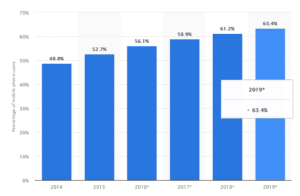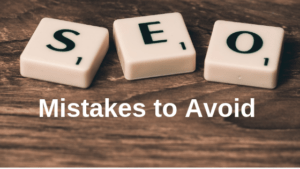I spend a lot of time spying on my competitors and make it a habit of visiting the best blogs at least once a week.
Beyond spying on my competitors and the best blogs in my niche, I also visit blogs and websites in different niches in order to “borrow” ideas from them.
You see, many bloggers get stuck in their own niche. If they blog about the Ketogenic diet then they only read other blogs about Ketogenic dieting or related to dieting.
I think this is a huge mistake.
Sometimes you have to “think outside the box” in order to stay ahead of the curve.
In this post, I’m going to show you a few things I’ve noticed the best blogs have in common. Hopefully, you’ll discover something you can apply to your own.
#1. An Excellent Content Plan
One of the things I always harp about on this blog is the importance of writing epic content.

However, I need to spend a little more time talking about the importance of having an excellent content plan.
Just take a look at bloggers like Lara who recently ran a 5-part series (yes 5 parts!) on goal setting. These types of blog posts take planning and reek of high quality, useful information.
The professionals like The Wall Stree Journal, National Geographic, and TechCrunch would all have a content plan with ideas about where they want their content to go over time.
You do not want to be caught up writing random blog posts on a daily basis without rhyme or reason.
If you don’t have a content plan, stop right now and start creating one.
Useful Resources:
#2. Long Term Goals
This is closely linked to the first one.
However, this doesn’t just refer to content goals, but things you wish to achieve with your blog and the things you want your blog to help you achieve.
For example, one of my personal goals of 2019 is to grow Bogging Plas to over 50 thousand unique visitors by the end of August and over 100k by the end of next year.
I also have short, medium, and long-term goals for the monetization of this blog as well as traveling and relationship goals that are attached to the growth of this blog.
So grab a pen and paper and let’s start setting some goals.
Short-Term: 0-6 months. Personal and blog related.
Examples:
- Personal: Stop procrastinating and run a marathon.
- Blog: Make my first sale and grow traffic by 50% each month.
Medium-Term: 6-12 months. Personal and blog related.
Examples:
- Personal: Quit my 9-5 job to become a full-time blogger.
- Blog: Generate enough income to support myself.
Long-Term: 1-5 years. Personal and blog related.
Examples:
- Personal: Visit 5 countries and find my soul mate.
- Blog: Create a successful online course and generate $10k+ in monthly income.
Your goals should be unique. Use the above examples as a guideline if you are having a hard time coming figuring out where to start.
Useful Resources:
#3. An Exemplary About Page
You can call this page “About” “About Us” or “About Me” depending on whether you have a business blog or a single-author personal blog.
Regardless of what you call it, the important thing is that it exists and that it helps build trust with your audience.
You should use this page to introduce your readers to the people behind your blog, its purpose, mission, values, and to give them an idea of what they should expect to find on your blog.
This is will be one of the most visited pages on your blog so make it count.
Useful Resources:
#4. Own Domain Name and Self Hosted
 If you’re new to blogging (most of my readers are), you’re probably a little scared by this one.
If you’re new to blogging (most of my readers are), you’re probably a little scared by this one.
However, it’s very hard to grow and monetize a blog using free blogging platforms like Blogger, Medium, or Tumblr. Sure, it happens, but it’s not typical.
If your goal is to become a successful full-time blogger you must have your own domain name (blog name) and use a good hosting company.
Doing this will make your blog look more professional and give you full control of the ways you monetize your blog.
Don’t get me wrong, free blogging platforms do have their place, but I only recommend them for those looking to blog as a hoppy and not for generating an income.
Without exceptions, the best blogs are privately owned and self-hosted.
Useful Resources:
#5. A Clear Voice
When you read content on a really good blog (like The Minimalists), you’ll notice that there is a very clear voice.
The writers know what they are trying to say and how to say it. Most importantly, they know exactly who the article was written for.
I started this blog to teach aspiring and novice bloggers how to start a blog, grow it, and make money.
Therefore, every article that I write is geared towards my ideal audience.
That doesn’t mean that an advanced blogger couldn’t learn something from this blog, but they are not my target audience.
The best blogs know who their target audience is and write specifically for them.
You need to figure out who your target audience is, and start writing in a clear and concise voice that resonates with them.
This will help you create a special bond with your readers and make monetizing your blog a breeze.
Useful Resources:
#6. A Basic Understanding of How SEO Works

SEO (Search Engine Optimization) changes a lot. Anyone who tells you that they have a “secret SEO sauce” is full of crap.
Google, nor any search engine for that matter, give out a manual explaining how their ranking algorithms work.
However, there are general SEO guidelines that the best blogs tend to follow and it would do your blog a world of good to do so as well.
A few years back Brian Dean put together a list of Google’s 200 Ranking Factors which only scratches the surface as to how complex SEO truly is.
Above all the one thing you should know about SEO is that any changes Google makes to its ranking algorithm are to provide a better user experience.
In other words, write in-depth articles that people find useful and Google will eventually reward you for it.
Useful Resources:
#7. A Good and Easy to Navigate Mobile Site
We all know that online usage on mobile devices is growing.

A recent study done by Statista found that by 2019 over 63% of the worlds population would be accessing the internet on the mobile phone.
This is nothing to sneeze at and it’s a phenomenon that the bloggers behind the best blogs in the world are aware of.
Visit any of the best blogs in your niche on your desktop and mobile phone and you’ll notice that the pages adapt when you visit them on your mobile phone.
This is called “responsive.”
In other words, the blog knows that you’re visiting on a mobile device and it adapts to provide you a better user experience.
This means reconfiguring the pages to better fit your smaller screen.
If you’re planning on starting a WordPress blog, you should not be worried about this as most newer themes are responsive.
However, if you already have a blog or website that isn’t responsive, be sure to make the change.
Useful Resources:
#8. Easily Sharable Content

There are 3.48 billion people using social media around the world.
No matter what blog niche you find yourself in, most of your readers will have a social media presence.
And you know what people love doing on social media?
Share things that they like.
If you take a look at a normal persons social media profile (regardless of platform), you’ll notice that most of what they publish is other people’s content.
In other words, they spend much of their time sharing, liking, pinning, or commenting on information that they like from other people. Be it a friend, a brand, or a company they follow.
Now take a quick look at the best blogs you know.
I guarantee you they have social share buttons all over their site.
They understand the importance of making it easy for their readers to share their content.
A simple share from one of your readers can bring hundreds or thousands of new readers to your blog… you never know, so make it as easy as possible for your readers to share your content.
How?
The quickest way is to install the Social Warfare plugin to your WordPress blog.
That’s the plugin I use on this blog. Install it, set it up, and wash your hands clean.
Useful Resources:
#9. Something that Makes Them Unique
You’ll notice that most blogs in your niche are similar.
They write similar content, recommend the same products, and tend to have a presence on the same social media platforms.
However, if you take a moment to study the best blogs within your niche, you’ll notice that they have certain things that set them apart from the others.
You’ll find many gurus saying that you need to be original – I don’t believe that. There are millions of successful companies making a fortune doing the exact same thing as others.
Think about all the major retail chains, fast food companies, and news sites telling the same stories.
They sell the same products and report on the same stories. However, they find ways to differentiate themselves from the pack.
The best blogs have ways to differentiate themselves from the rest.
Whether it’s through a personal story, their writing style, the way they deliver content, or by the way they build their brand.
You don’t have to reinvent the wheel, just find a way to differentiate your blog from the rest of the pack.
Useful Resources:
#10. A Subscribers List (Email List)

The best blogs in any niche have a way of collecting emails.
They might offer a free ebook, course, content, ect in exchange for giving them your email.
How you go about building your email list isn’t as important as starting to build one the moment you start blogging.
Why? Because there are many great ways to collect emails. It’s up to you to decide which way works best for your blog.
Just make sure that you deliver whatever it is that you decide to promise in exchange for the email.
Nothing annoys people more than giving out their email expecting “X” and receiving “Y.”
Not delivering on your promises is a perfect way to grow your “unsubscribe” numbers.
I currently use MailChimp’s free service which allows you to collect up to 2k emails and send out 12k emails per month to your subscribers.
Planning to test other email marketing companies in the coming months, but starting out MailChimp is the way to go.
Useful Resources:
What is Your Blog Missing?
Let me turn it over to you – what features, ideas or successes have you seen on the best blogs that you plan on implementing? Leave a comment and let me know.






